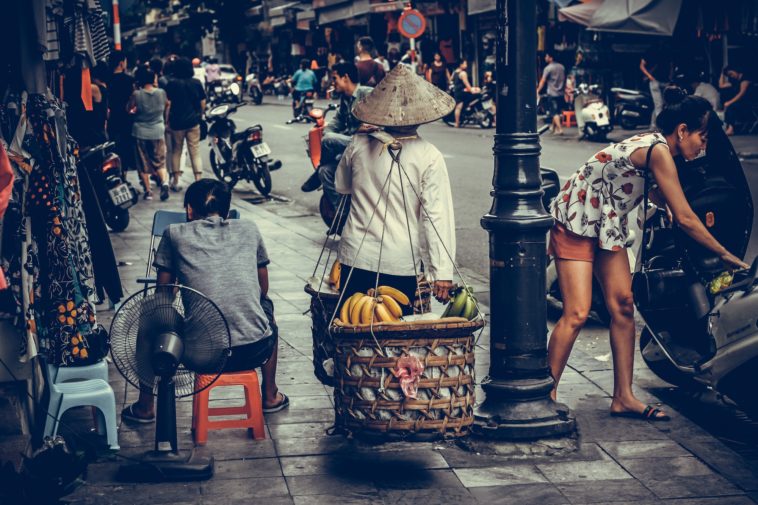The Kinh people, also recognized as the Vietnamese people (Vietnamese terms: người Việt or người Kinh), predominantly trace their roots to the regions of northern Vietnam and southern China. As per the demographic data gathered in 1999, they form about 86% of Vietnam’s total populace. Officially, they are referred to as “Kinh” as a means to differentiate them from other ethnic communities residing in Vietnam. Historically, the earliest mention of this ethnic group was by the name “Lạc.”
Historical Overview
The Vietnamese people have a rich history that spans thousands of years. One of the earliest civilizations associated with them is the Đông Sơn culture, dating back to around 1000 BCE. Over time, the region underwent numerous invasions and colonization, notably by the Chinese Han Dynasty and later by the French. Throughout history, the Vietnamese people have been active in fighting for their sovereignty. This is evident in famous historical uprisings such as the Trưng Sisters’ rebellion against Chinese rule in the 1st century CE and the more recent events leading to Vietnam’s independence from French colonial rule in 1954.
| Time Period | Significant Event | Description |
|---|---|---|
| ~1000 BCE | Đông Sơn Culture | One of the earliest civilizations associated with the Kinh |
| 1st Century CE | Trưng Sisters’ Rebellion | Uprising against Chinese rule |
| 1954 | Independence from French rule | The end of French colonial rule in Vietnam |
Language and Dialects
The primary language spoken by the Kinh people is Vietnamese, a member of the Austroasiatic language family. There are three main dialects: Northern, Central, and Southern Vietnamese. While the written language remains fairly consistent across the country, these dialects can differ substantially in pronunciation, vocabulary, and even some grammatical aspects.
| Dialect | Region | Characteristics |
|---|---|---|
| Northern | North Vietnam | Original accent, tonal differences |
| Central | Central Vietnam | Varies in vocabulary |
| Southern | South Vietnam | More relaxed pronunciation |
Religion and Spirituality
The belief systems among the Kinh are varied, with a mix of Buddhism, Confucianism, and Taoism having the most significant influence. Ancestor worship is also a prevalent practice. In recent times, there has been a rise in the number of people identifying with Christianity and other world religions.
| Religion/Belief System | Percentage of Kinh Practicing | Key Elements |
|---|---|---|
| Buddhism | ~50% | Meditation, Eightfold Path |
| Confucianism | ~30% | Ethics, Family Values |
| Taoism | ~10% | Natural Order, Yin and Yang |
| Ancestor Worship | Varied | Honoring deceased family members |
| Christianity | Rising | Belief in Jesus Christ |
Socio-Economic Status
Economically, the Kinh people are involved in a variety of occupations ranging from agriculture and fishing to more modern professions in business and technology. As Vietnam’s economy has grown in recent years, the standard of living for many Kinh people has improved, although there are still challenges related to income disparity and urban-rural divides.
| Occupation Type | Percentage of Kinh Involved | Details |
|---|---|---|
| Agriculture | ~50% | Rice farming, livestock |
| Fishing | ~20% | Coastal and freshwater fishing |
| Business | ~15% | Retail, trade |
| Technology | ~10% | IT, software development |
| Other | ~5% | Various other professions |
Demographic Information
According to the 1999 census, the Kinh people make up approximately 86% of the country’s population. This has led to them having a significant influence on the country’s culture, governance, and social structures. However, Vietnam is also home to 54 recognized ethnic groups, which contribute to the country’s diverse cultural tapestry.
Geographic Distribution
The majority of the Kinh people reside in the lowland areas, particularly in the Red River Delta in the north and the Mekong Delta in the south. Some also live in urban areas like Hanoi, the capital city, and Ho Chi Minh City, the largest city in Vietnam.
| Region | Population Density of Kinh | Major Cities |
|---|---|---|
| Red River Delta | High | Hanoi |
| Mekong Delta | High | Can Tho, My Tho |
| Central Highlands | Moderate | Da Nang, Hue |
| Northern Mountains | Low | Sapa |
Cuisine and Food Culture
Vietnamese cuisine, primarily influenced by the Kinh people, is characterized by its balance of flavors and extensive use of herbs and spices. Rice is a staple, and the diet is often supplemented with a variety of meats, seafood, and vegetables.
Cultural Contributions
Vietnamese culture, as shaped largely by the Kinh people, places a high emphasis on family values, education, and community. Traditional arts like water puppetry, classical music, and folk songs also form an integral part of their cultural heritage.
Conclusion
To sum up, the Kinh people, commonly known as the Vietnamese, form the majority ethnic group in Vietnam, with their roots primarily in northern Vietnam and southern China. They are diverse in terms of religion, occupation, and even dialects within the Vietnamese language. They have had a profound impact on Vietnam’s history, culture, and society, and continue to be the dominant demographic in the country. Their contributions can be seen in everything from the nation’s cuisine to its traditions and values.
In order to understand Vietnam and its socio-cultural intricacies, one must first comprehend the complex history and vibrant culture of the Kinh people who make up the majority of its population.





